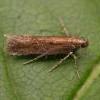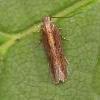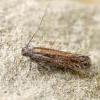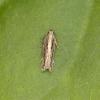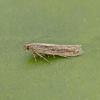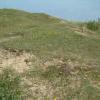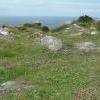35.120 Scrobipalpa artemisiella (Treitschke, 1833)
Status and Distribution
Widespread but very local throughout much of the British Isles; can be locally common in coastal sandhills, including machair, and limestone habitats. Apparently absent from the Orkney, Shetland, Isle of Man, Isles of Scilly and Channel Islands.
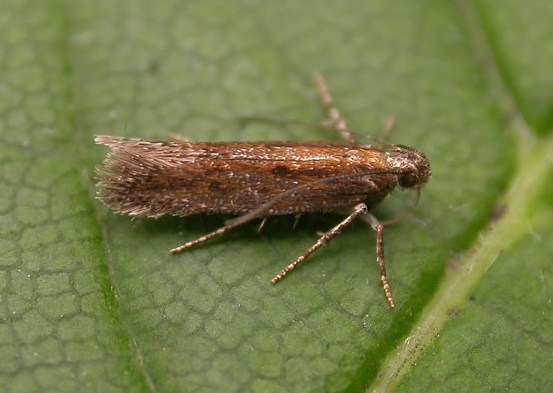
Provisional map
Foodplant and Larval Feeding Signs
Thymus polytrichus (wild thyme), see plant distribution map. In Europe found also on Thymus pulegioides (large thyme) and T. serpyllum (breckland thyme), while records of a range of other plants including Centaurea, Achillea and Artemisia spp. are all unconfirmed.
Initially within a leaf in a short brownish leaf-mine; later within a silken web on the underside of a stem. In Europe the stages of feeding after the mine are described as feeding between spun terminal shoots and stems.
Habitat
Finding the Moth
Larva: in a short brownish leaf-mine in the early stages and progressing to feeding from within a silken web on the underside of a stem. In Europe the stages of feeding after the mine are described as feeding between spun terminal shoots and stems.
Adult: readily disturbed from amongst the foodplant during the day making short flights in warm conditions with little prompting, flies more freely at dusk and comes to light on occasions.
Similar Species
Due to the variability of the forewing markings, it can be confused with other species. However its small size (wingspan 10 - 12mm), the presence in some specimens of a broad pale central band on the thorax extending but tapering onto the basal half of the dorsum of the forewing and its presence in amongst patches of thyme will prove sufficient to identify the species. If the moth is at all worn, caught well away from any reasonably sized clumps of thyme or there is any other doubt about the identification then dissection is recommended.
It should be noted that the genitalia are identical, in both male and female, to Scrobipalpa stangei apart from the larger size of that species. S. stangei is a species of saltmarshes and has not been noted in Britain other than in July 1882 on the Isle of Wight.
Single brooded from mid-June to mid-August although there are a very small number of records from mid-May to early June and also from late August into early September.
Earliest: 6th May 2011 (VC41)
Latest: 14th September 1952 (VC17)

